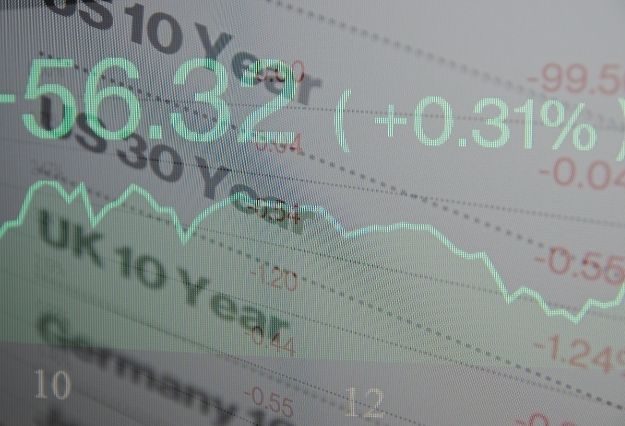Spreadlock and Range Forward Contract
Forward-based spread locks and option-based spreadlock are the two forms of spreadlock.
A forward spreadlock enables a specific amount of basis points to be added to the existing spread. This type of forwarding contract is used primarily to hedge or minimize foreign currency risk.
This contract entails taking two opposing options positions where the buyer of an option spreadlock can choose whether or not to use an interest rate swap. The implied forward swap rate and the implied forward bond yield is the price of a spreadlock.
Spreadlocks contribute an accurate interest rate control and more flexibility and personalization of interest rate swaps. They are frequently employed to protect against bond issuance.
What Is a Spreadlock?
A spreadlock is a credit derivative that establishes a fixed spread on future interest rate swaps. It allows an investor or trader to lock in the current spread between a swap and an underlying government bond yield.
There are two types of spreadlocks— forward-based spreadlocks and option-based spreadlocks. This technique enables the forward transfer of basis points to the point where the swap is written.
Spreadlocks can be beneficial for investors who are thinking about using an interest rate swap in the future. Unfortunately, they are, however, not accessible in all markets.
Understanding a Spreadlock
Since the late 1980s, investors have had the option of using spreadlocks, which quickly joined swaps, caps, floors, and swaptions as plain vanilla derivative structures.
The main reason for the forward spreadlock is to add a predetermined amount of basis points to the contemporary spread in the underlying swap. The buyer of a spreadlock via an option contract has the choice to make the helpful exchange forward range extended or not.
A forward-based spreadlock is a two-way transaction in which the parties agree to complete a five-year exchange at once. In this hypothetical swap, one party can agree to pay a floating rate, such as the London Interbank Offered Rate (LIBOR), while the other party can pay the five-year treasury yield and an additional 30 points at the start date.
In the case of an option-based spreadlock, one of the parties would have the option to decide whether or not the swap would go into effect before the maturity date. Spreadlocks are credit derivatives because the general level of credit spreads is the underlying swap spread. Furthermore, spreadlocks provide more accurate interest rate control, as well as greater flexibility and personalization.
The purpose of a spreadlock is to protect against changes in the spread between swaps and the underlying government bond rate. Additionally, spreadlocks need ISDA documentation since they have an unlimited loss potential, and implied forwards might be unappealing at times.
Spreadlocks and Swap Spread Curves
The cost of a spreadlock is the same as the difference between the implied forward swap rate and the implied forward bond yield. A swap curve identifies the connection between Swap Rates with different maturities. You can study the swap spread curve independently of the swap yield curve.
Because swap spreads for shorter maturities are lower than swap spreads for longer maturities, a positively sloped spread curve suggests that swap spreads will increase with time. Furthermore, because swap spreads for shorter maturities are larger than swapping spreads for longer maturities, a downwardly sloped spread curve suggests that swap spreads will decrease with time.
Spreadlocks and Hedging Bond Issuances
Spreadlocks are commonly employed to hedge bond issuances. When a corporation issues a bond, the fixed rate is usually higher than that of treasuries. When a corporation gives a bond, interest rates can fluctuate between the time the decision to issue a bond is made and the time the bond is funded.
Hedging the fluctuations in the spread between the offered fixed-rate and the treasury yield can be challenging. This is because when bond prices decline, interest rates rise (and vice versa), with long-maturity bonds being the most susceptible to rate fluctuations.
What Is a Range Forward Contract?
A range forward contract is a zero-cost contract that brings about a scale of practice prices by uniting two derivative market positions. It is intended to protect against adverse currency movements while also providing some upside potential to benefit from good currency swings.
Range forward contracts are designed to enable funds settlement at a range of prices. They require two derivative market positions, which form a range for eventual settlement. The forward range from contracts is most often employed in the currency markets to hedge against currency market volatility.
A trader must take a long and short position in a range forward contract using these two derivative contracts. The sum of the expenses from the two places usually equals zero. To mitigate currency risks from foreign clientele, large businesses frequently employ forward-range contracts.
How Do Forward Contracts Work?
There are four major components to consider when entering into a forward contract. The four components are as follows:
- Assets: They are the underlying assets listed in the contract.
- Expiration Date: When the agreement is settled, the asset is delivered, and the deliverer is paid, the contract must have an expiration date.
- Quantity: It’s the contract’s size, and it specifies the amount in units of the asset being bought and sold.
- Price: The price that will be paid on the maturity/expiration date must also be specified. This will also include the currency in which you will make the payment.
Forward contracts are not traded on centralized exchanges. However, they are customized, over-the-counter contracts created between two parties. The underlying asset will be delivered by one party, and the other party will pay the agreed-upon price and take possession of the asset. This contract must be settled before the expiration date. Forward contracts can also be settled in cash on the expiration date rather than delivering the underlying physical asset.
What Do Use Forward Contracts For?
Forward contracts are primarily used to mitigate potential losses as they allow participants to lock in a future price. This guaranteed price can be significant, especially in industries where prices are frequently volatile.
When making substantial international purchases, forwards are also commonly used to hedge against changes in currency exchange rates. Furthermore, you can use forward contracts for pure speculation because two parties create them, are not traded on centralized exchanges, and are less common than futures.
A speculator can enter a long forward position if they believe that the future spot price of an asset will be higher than the forward price today. They will profit if the future spot price is higher than the agreed-upon contract price.
What’s the Difference Between a Forward Agreement and a Futures Contract?
Futures contracts and forward contracts are very similar. They are recognized by an agreement on a particular price and quantity of an underlying asset to be paid at a future date. However, there are a few significant differences as follows:
- Forwards are unique and bespoke contracts between two parties, whereas futures are standardized contracts traded on centralized exchanges.
- Forwards are settled at the expiration date agreed upon by the two parties, implying that counterparty risk is higher than in futures contracts with clearinghouses.
- Forwards are settled on a single date, the expiration date, whereas futures are marked-to-market daily, which means they can be traded whenever the exchange is open.
- Forwards, unlike futures contracts, are paid on a single date and are not typically linked with initial or maintenance margins.
- Although both contracts might entail asset delivery or cash settlement, physical delivery is more frequent for forwards, and cash settlement is more prevalent for futures.
International Currency Business Risks
Consider a U.S business that has received a EUR1 million export order from a European customer. The firm is anxious about the prospect of a sharp drop in the euro (which is now trading at 1.30 to the USD) for the next three months when payment is due. The business can hedge this exposure with derivative contracts while preserving some upside.
To control the risks of payment from the European client, the business would put up a forward range contract. This can necessitate purchasing an extended contract at the lower bound and selling a short contract at the upper bound. Assume the lower barrier is EUR1.27 and the upper bound is EUR1.33.
If the actual currency rate at expiration is 1 euro equals $1.31, the contract closes at that rate (because it is within the yield 1.27 to 1.33 range). The contracts are used if the exchange rate at expiry is outside of the range.
If the currency rate at the time of expiration is 1 euro, which equals $1.25, you must fulfill its long purchase contract at the floor rate of 1.27. If, on the other hand, the exchange rate at the time of expiration is 1 euro equals $1.36, the company must sell at 1.33.
Range forward contracts are advantageous since they necessitate two positions for complete risk reduction. The cost of the extended range yield contract is generally equal to the cost of the contract to sell, resulting in a zero net cost for the range forward contract.










